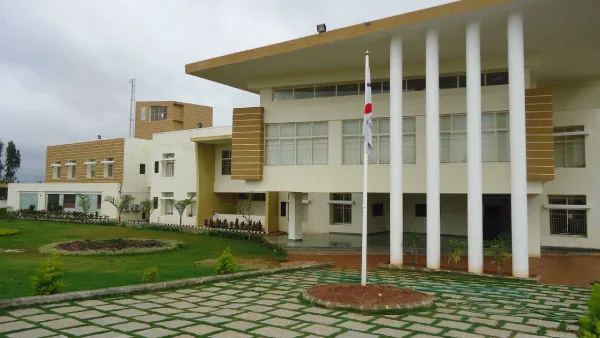Download our FREE Academic Calendar now! 📚 Start your child’s journey to success.
India is the largest democracy in the world. Its unity despite its diversity is proof of its excellent administration. And, to ensure the proper administration of such a large unit, it was divided into states and union territories. India has 28 states and 8 union territories.
To help you understand the political geography of our country, we bring to you this article on the difference between states and union territories. Understanding this difference and learning about the two units will also help you answer general knowledge questions and improve your academic performance.
What is a State?
As per the Indian constitution, a state is an independent unit that has its own separate government. The state elects its government, which has the right to frame its own laws. The Parliament does not make the laws for a state.
A state has its Chief Minister and its Legislative Assembly for administration. The Governor is the executive head or the representative of the President in a state.
The sovereign legislative and executive powers are distributed between the Center and the state. Furthermore, a state has a larger geographical area and population compared to a union territory.
What is Union Territory?
A union territory is a smaller and independent unit as compared to a state. It is ruled by the Central Government. The President of India nominates a Lieutenant Governor or an administrator for each union territory.
A union territory may or may not have a Legislative Assembly. Although Delhi and Puducherry have their Legislative Assemblies, they have limited rights. The bills passed in these assemblies have to be approved by the President. They also need to take the approval of the Central Government to make special laws.
Difference Between State and Union Territory
Here’s a detailed difference between states and union territories in India that will further help you understand the two units and how they are governed.
| State | Union Territory |
| It has a large area. | It has a small area. |
| It is an independent unit. | It is not an independent unit. |
| It elects its Government. | It is ruled by the Central Government. |
| It has a larger population as compared to a union territory | It has a smaller population. |
| A state is administered by a Chief Minister. | A union territory is administered by the Lieutenant Governor. |
| The Chief Minister is elected through an election. | The Lieutenant Governor is appointed by the President. |
| The Governor is the head of the state. | The President is the head of the union territory. |
| A state has more powers than a union territory. | All the powers lie in the hands of the Central Government. |
| There are 28 states in India. | There are 8 union territories in India. |
| Examples: Maharashtra, Gujarat, Punjab, Haryana | Examples: Delhi, Chandigarh, Puducherry |
What are the 28 states and 8 Union Territories?
The 28 states of India are:
- Assam
- Andhra Pradesh
- Arunachal Pradesh
- Bihar
- Chhattisgarh
- Goa
- Gujarat
- Haryana
- Himachal Pradesh
- Jharkhand
- Karnataka
- Kerala
- Maharashtra
- Madhya Pradesh
- Manipur
- Meghalaya
- Mizoram
- Nagaland
- Odisha
- Punjab
- Rajasthan
- Sikkim
- Tamil Nadu
- Telangana
- Tripura
- Uttar Pradesh
- Uttarakhand
- West Bengal
The 8 Union Territories of India are:
- Andaman and Nicobar islands
- Dadra and Nagar Haveli and Daman and Diu
- Chandigarh
- Lakshadweep
- Puducherry
- Delhi
- Ladakh
- Jammu and Kashmir
What Makes Delhi, Puducherry, and Jammu & Kashmir Different from Other Union Territories?
Out of the 8 union territories in India, Delhi, Puducherry, and Jammu and Kashmir have been granted partial statehood by amendment to the Constitution. As a result, these union territories have their elected members and Chief Minister. They have their legislative assembly and executive council and operate like states, unlike other union territories.
Conclusion
The best school in Noida helps students understand these intricacies of the political geography of India with the help of maps, PDFs, and videos. For more information on school admission in Noida and the pedagogy of the school, its principles, and beliefs, do visit the school’s website.
FAQs on State and UTs Differentiation
Why Are They Called Union Territories?
Union territories are too small to be independent. They are culturally, economically, and geographically different from their surrounding states. They are also either financially weaker or politically unstable.
As a result, they cannot survive as separate administrative units and need to be administered by the Union Government. This is why they are called Union Territories.
Why Goa is Not a Union Territory?
From 1961 to 1987, Goa was a union territory. However, in the year 1967, an opinion poll was conducted in Goa to decide whether Goa would merge with its neighboring state, Maharashtra, or stay as a union territory. But, as the people of Goa were against a merger, Goa remained a union territory.
The language of Goa, Konkani, being distinct, the people of Goa wanted to preserve its distinctness, which would have been lost due to a merger with Maharashtra. Finally, in the year 1987, a resolution was passed in the Goa Assembly and Goa was declared a state.
Are there 8 or 9 Union Territories?
From 1954 to 2019, Jammu and Kashmir were administered as a state. However, the Government of India revoked the special status given to Jammu and Kashmir in 2019.
The Parliament of India passed the Jammu and Kashmir Reorganization Act, which reorganized the state into 2 union territories: Jammu and Kashmir in the west, and Ladakh in the east, starting from the 31st October 2019. Therefore, there are 8 union territories in India.
Why was India divided into States and Union Territories?
India is a large country. As it is difficult to administer a large unit from one place, India was divided into smaller units of states and union territories. These units have been further divided into districts.
This division into smaller units makes it easy to administer them, maintain law and order, and work towards their development and progress.
Is Union Territory Better than State?
Union territories are mainly urban areas. They are also smaller in size as compared to states, which makes them easier to administer. Therefore, in a debate on union territory vs state, a union territory is considered better than a state.





































